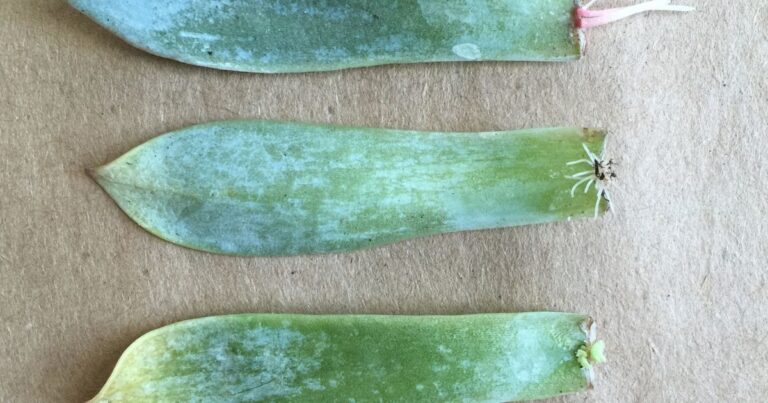Orange Twigged Linden: Facts and Characteristics
Understanding Orange Twigged Linden
Orange twigged linden, also known as Tilia henryana, is a medium to large tree that can grow up to a mature height of 12-17m. It is a deciduous tree that is native to China and is often planted as an ornamental tree in parks and gardens.
The most distinctive feature of this tree is its orange-brown twigs, which provide a striking contrast to its dark green leaves. The leaves of the orange twigged linden are heart-shaped and have serrated edges. They grow up to 10cm long and 8cm wide. The tree produces small, fragrant flowers that are yellow-green in color and appear in clusters in early summer.
Orange twigged linden is a hardy tree that can grow in a variety of soil types, including clay, loam, and sand. It prefers moist, well-drained soil and can tolerate both full sun and partial shade. It is also resistant to pollution, making it a good choice for urban environments.
One of the benefits of planting orange twigged linden is its ability to attract pollinators such as bees and butterflies. The fragrant flowers of the tree are a valuable source of nectar and pollen for these insects.
In addition to its aesthetic and ecological benefits, orange twigged linden also has some practical uses. The wood of the tree is strong and durable, making it suitable for use in furniture, flooring, and other construction projects.
Overall, orange twigged linden is a beautiful and versatile tree that can provide both aesthetic and practical benefits. Whether you are looking to add a striking feature to your garden or to attract pollinators to your yard, this tree is a great choice.
Growth and Conditions
Orange twigged linden is a hardy tree that can grow in a variety of soil conditions, including clay and loam. However, it prefers well-draining soil that is slightly acidic to neutral, with a pH range of 6.0 to 7.5. If you are unsure about your soil’s pH level, you can have it tested by a local nursery or cooperative extension office.
When it comes to sunlight, orange twigged linden can grow in full sun or partial shade. However, it tends to grow more vigorously and produce more flowers when planted in full sun. If you choose to plant it in partial shade, make sure it still gets at least 4-6 hours of direct sunlight per day.
Orange twigged linden can reach a mature height of 50-70 feet, with a spread of 35-50 feet. It has a moderate to fast growth rate, averaging about 1-2 feet of growth per year. To encourage healthy growth, make sure to water your tree regularly, especially during the first few years after planting.
Overall, orange twigged linden is a low-maintenance tree that can thrive in a variety of conditions. With proper care and attention, it can provide shade, beauty, and fragrance to your landscape for many years to come.
Cultivation and Planting
Orange twigged linden is a beautiful tree that grows well in gardens and is a great addition to any planting scheme. With proper care, it can grow up to 80 feet tall and 40 feet wide, making it an excellent choice for larger landscapes. Here are some tips for cultivating and planting orange twigged linden:
Soil and Sunlight
Orange twigged linden prefers well-drained soil that is slightly acidic to neutral. It can tolerate some drought conditions, but it thrives in moist soil. Plant it in an area that receives full sun to partial shade, and make sure it has plenty of room to grow.
Planting
When planting orange twigged linden, dig a hole that is twice as wide as the root ball and the same depth as the container. Place the tree in the hole and backfill with soil, making sure to tamp it down firmly. Water the tree thoroughly and add a layer of mulch around the base to help retain moisture.
Maintenance
Orange twigged linden requires minimal maintenance, but regular pruning can help keep it healthy and looking its best. Prune in late winter or early spring before new growth begins, and remove any dead or damaged branches. You can also shape the tree by removing any crossing or rubbing branches.
Xeriscaping
Orange twigged linden is not typically used in xeriscaping due to its preference for moist soil. However, it can be used in areas with adequate irrigation and can provide shade and beauty to a xeriscape garden.
Horticulture
Orange twigged linden is a popular tree in horticulture due to its attractive foliage, fragrant flowers, and tolerance for urban conditions. It is often used in parks and along streets and can provide a beautiful backdrop for other plants.
Overall, orange twigged linden is a great tree for gardens and landscapes with its beautiful foliage, fragrant flowers, and tolerance for various growing conditions. With proper care and maintenance, it can provide years of enjoyment and beauty.
Care and Maintenance
Orange twigged linden is a hardy tree that requires minimal maintenance once established. However, proper care is essential to ensure its health and longevity. Here are some tips to help you keep your orange twigged linden tree healthy and beautiful:
Pruning
Pruning is an essential part of orange twigged linden tree care. It helps to remove dead or diseased branches, promotes healthy growth, and maintains the tree’s shape and size. Pruning should be done in late winter or early spring, before new growth begins. Here are some tips for pruning your orange twigged linden tree:
- Use sharp, clean pruning shears to make clean cuts.
- Remove any branches that are crossing or rubbing against each other.
- Cut back any branches that are growing too close to the ground or interfering with structures or power lines.
- Remove any dead or diseased branches.
- Avoid pruning more than one-third of the tree’s canopy in a single year.
Shearing
Shearing is another way to maintain the shape and size of your orange twigged linden tree. It involves cutting back the tips of the branches to promote dense growth and a compact shape. Shearing is best done in early to mid-summer, after the tree has finished flowering. Here are some tips for shearing your orange twigged linden tree:
- Use sharp, clean shears to make clean cuts.
- Cut back the tips of the branches to the desired shape and size.
- Avoid cutting into the older wood, as this can cause damage to the tree.
Pollarding
Pollarding is a severe form of pruning that involves cutting back the tree to a few main branches each year. This technique is used to control the size of the tree and promote dense growth. Pollarding should be done in late winter or early spring, before new growth begins. Here are some tips for pollarding your orange twigged linden tree:
- Use sharp, clean pruning shears to make clean cuts.
- Cut back the tree to a few main branches, leaving a few buds on each branch.
- Avoid cutting into the older wood, as this can cause damage to the tree.
Pleach
Pleaching is a technique used to create a hedge or screen by training the branches of the tree into a specific shape. It involves tying the branches together and cutting back the new growth to promote dense growth. Pleaching should be done in late winter or early spring, before new growth begins. Here are some tips for pleaching your orange twigged linden tree:
- Use soft, flexible ties to tie the branches together.
- Cut back the new growth to promote dense growth.
- Avoid cutting into the older wood, as this can cause damage to the tree.
In conclusion, proper care and maintenance are essential to ensure the health and longevity of your orange twigged linden tree. Regular pruning, shearing, pollarding, and pleaching will help keep your tree healthy and beautiful for years to come.
Seasonal Changes
The Orange Twigged Linden is a deciduous tree that goes through seasonal changes throughout the year. In winter, the tree’s branches are adorned with small, bright orange buds, which are a striking contrast against the stark white snow. As the weather warms up, these buds will eventually blossom into beautiful, fragrant flowers.
During the autumn months, the leaves of the Orange Twigged Linden turn a stunning golden-yellow color, which is a beautiful sight to see. These leaves will eventually fall off the tree and create a carpet of color on the ground.
In the spring and summer months, the Orange Twigged Linden has green leaves that provide shade and shelter for animals and humans alike. The leaves are heart-shaped and have serrated edges, which adds to their beauty.
Autumn is a particularly special time for the Orange Twigged Linden, as it is when the tree’s leaves change color and fall to the ground. This is a natural process that occurs as the tree prepares for the winter months. During this time, the tree’s energy is focused on storing nutrients and water in its roots, which will provide it with the necessary resources to survive the cold winter months.
In conclusion, the seasonal changes of the Orange Twigged Linden are a beautiful sight to behold. From the bright orange buds of winter to the golden-yellow leaves of autumn, this tree is a true wonder of nature. Whether you are an animal or a human, the Orange Twigged Linden provides beauty, shade, and shelter throughout the year.
Species and Varieties
Orange twigged linden, also known as Tilia cordata ‘Winter Orange,’ is a deciduous tree that belongs to the Tiliaceae family. This species is known for its unique orange-brown bark on the young twigs, which contrasts against the green foliage.
There are several varieties of Tilia cordata, including the ‘Greenspire,’ ‘PNI6025,’ and ‘Corinthian.’ The ‘Greenspire’ variety is known for its pyramidal shape and fragrant flowers, while the ‘PNI6025’ is a columnar variety that is perfect for urban landscapes. The ‘Corinthian’ variety is known for its dense, symmetrical canopy and is often used for street plantings.
In addition to Tilia cordata, there are other species of linden trees, including the littleleaf linden (Tilia cordata Mill. var. cordata) and the American linden (Tilia americana). The littleleaf linden is a smaller tree with heart-shaped leaves and fragrant flowers, while the American linden is a larger tree with a broad, spreading canopy and yellow fall color.
The Tilia cordata species is also known for its cultivars, which have been bred for specific characteristics. Some popular cultivars include ‘Rancho,’ which has a narrow, upright growth habit, and ‘Rubra,’ which has reddish-pink flowers.
Overall, Tilia cordata is a versatile species with many varieties and cultivars to choose from. Whether you are looking for a tree with fragrant flowers, a narrow growth habit, or a unique bark color, there is a Tilia cordata variety that will fit your needs.
Attracting Wildlife
The orange twigged linden is a great tree to attract wildlife to your garden. The fragrant flowers of the tree attract pollinators like bees and butterflies, while the seeds of the tree are a source of food for birds.
Birds are attracted to the orange twigged linden because of the seeds that it produces. In addition, the tree provides a great nesting habitat for birds. You can also hang bird feeders from the branches of the tree to attract even more birds.
Butterflies are also attracted to the orange twigged linden because of the fragrant flowers that it produces. The nectar from the flowers provides a great source of food for butterflies. You can also plant other butterfly-friendly plants around the tree to attract even more butterflies.
The fragrant flowers of the orange twigged linden make it a great addition to any garden. The sweet smell of the flowers is sure to attract attention from both people and wildlife. The fragrance of the tree is strongest in the evening, so consider planting it near a patio or seating area where you can enjoy the scent.
Overall, the orange twigged linden is a great tree to attract wildlife to your garden. Its fragrant flowers, seeds, and nesting habitat make it a perfect addition to any garden.
Frequently Asked Questions
Where is the best place to plant a linden tree?
Linden trees prefer a sunny location with well-drained soil. They can tolerate some shade but do best when planted in full sun. They are also tolerant of a wide range of soil types, but prefer moist, well-drained soil.
What is special about a linden tree?
Linden trees are known for their fragrant, nectar-rich flowers that attract bees and other pollinators. They also have attractive, heart-shaped leaves that turn a vibrant yellow in the fall. In addition, linden trees have a long history of use in traditional medicine and are believed to have a number of health benefits.
Is a linden tree a good tree?
Yes, linden trees are a great choice for a shade tree. They are easy to care for, have a long lifespan, and provide a number of benefits to both humans and wildlife. They are also resistant to many common tree diseases and pests.
What is the myth of the linden tree?
In many cultures, the linden tree is associated with love, fertility, and rebirth. In Germanic mythology, the goddess Freya was said to live in a linden tree, while in Slavic mythology, the linden tree was believed to be a sacred tree that connected the earth and the heavens.
What are the benefits of planting a linden tree?
Linden trees provide a number of benefits to both humans and wildlife. They are an important source of nectar for bees and other pollinators, and their leaves and bark have been used for centuries in traditional medicine. In addition, linden trees provide shade, reduce noise pollution, and improve air quality.
How do I care for a linden tree?
Linden trees are relatively low-maintenance and require little pruning. They should be watered regularly, especially during dry spells, and fertilized once a year in the spring. It is also important to watch for signs of pest or disease problems and treat them promptly if they occur.
Linden trees prefer a sunny location with well-drained soil. They can tolerate some shade but do best when planted in full sun. They are also tolerant of a wide range of soil types, but prefer moist, well-drained soil.
“}},{“@type”:”Question”,”name”:”What is special about a linden tree?”,”acceptedAnswer”:{“@type”:”Answer”,”text”:”
Linden trees are known for their fragrant, nectar-rich flowers that attract bees and other pollinators. They also have attractive, heart-shaped leaves that turn a vibrant yellow in the fall. In addition, linden trees have a long history of use in traditional medicine and are believed to have a number of health benefits.
“}},{“@type”:”Question”,”name”:”Is a linden tree a good tree?”,”acceptedAnswer”:{“@type”:”Answer”,”text”:”
Yes, linden trees are a great choice for a shade tree. They are easy to care for, have a long lifespan, and provide a number of benefits to both humans and wildlife. They are also resistant to many common tree diseases and pests.
“}},{“@type”:”Question”,”name”:”What is the myth of the linden tree?”,”acceptedAnswer”:{“@type”:”Answer”,”text”:”
In many cultures, the linden tree is associated with love, fertility, and rebirth. In Germanic mythology, the goddess Freya was said to live in a linden tree, while in Slavic mythology, the linden tree was believed to be a sacred tree that connected the earth and the heavens.
“}},{“@type”:”Question”,”name”:”What are the benefits of planting a linden tree?”,”acceptedAnswer”:{“@type”:”Answer”,”text”:”
Linden trees provide a number of benefits to both humans and wildlife. They are an important source of nectar for bees and other pollinators, and their leaves and bark have been used for centuries in traditional medicine. In addition, linden trees provide shade, reduce noise pollution, and improve air quality.
“}},{“@type”:”Question”,”name”:”How do I care for a linden tree?”,”acceptedAnswer”:{“@type”:”Answer”,”text”:”
Linden trees are relatively low-maintenance and require little pruning. They should be watered regularly, especially during dry spells, and fertilized once a year in the spring. It is also important to watch for signs of pest or disease problems and treat them promptly if they occur.
“}}]}


